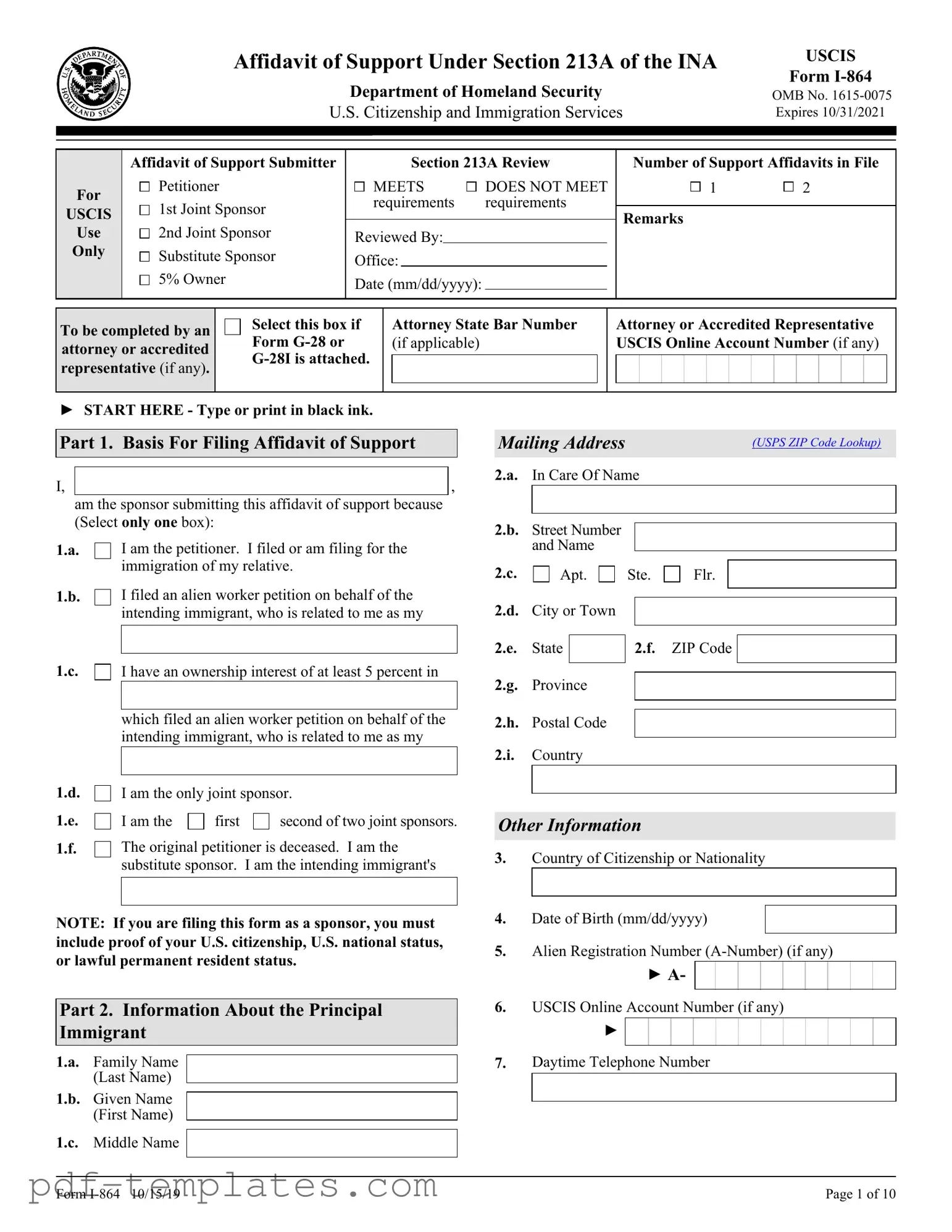The USCIS I-864 form, also known as the Affidavit of Support, shares similarities with the I-134 form. Both documents are used to demonstrate financial support for an immigrant. While the I-864 is typically required for family-based immigration and some employment-based cases, the I-134 is often used for non-immigrant visa applicants, such as tourists or students. Each form aims to show that the applicant will not become a public charge, but the I-864 requires a more detailed financial assessment and is legally binding.
Another document similar to the I-864 is the I-864A, which is a contract between the primary sponsor and a household member. This form allows additional income or assets from the household member to be counted towards the financial support requirement. The I-864A must be submitted alongside the I-864 to strengthen the financial case for the immigrant. Both forms work together to ensure that the immigrant has sufficient financial backing.
The I-864EZ is a simplified version of the I-864 form, designed for certain applicants who meet specific criteria. Like the I-864, it serves to prove that the sponsor can financially support the immigrant. The I-864EZ is less complex and requires fewer supporting documents, making it easier for eligible sponsors to complete. This form is ideal for those who do not have dependents and meet income requirements.
The I-130 form, while primarily a petition for a relative to immigrate, also relates to the I-864. When filing the I-130, the petitioner must eventually submit an I-864 to demonstrate their ability to support the immigrant financially. Both forms are part of the family-based immigration process, and the I-130 lays the groundwork for the financial commitment shown in the I-864.
Form I-751, Petition to Remove Conditions on Residence, also connects to the I-864. When a conditional resident seeks to remove their status, they must prove that their marriage was genuine and not solely for immigration benefits. The I-864 may be referenced to show the financial support provided by the U.S. citizen spouse, reinforcing the authenticity of the marriage.
The I-140 form, used for employment-based immigration, also has a relationship with the I-864. In cases where the employer is sponsoring a worker, the employer may need to submit an I-864 if the worker’s family members are applying for visas. This ensures that the family will have financial support while residing in the United States, similar to the requirements of the I-864 for family-based cases.
The N-400 form, the application for naturalization, can also be connected to the I-864. When applying for citizenship, applicants may need to demonstrate their continuous residence and good moral character, which includes financial stability. While the I-864 is not directly required for this process, the financial support shown in the I-864 can reflect positively on the applicant's character and stability.
The DS-260 form, used for immigrant visa applications, is another document that parallels the I-864. When completing the DS-260, applicants must provide information about their financial situation and may need to reference the I-864 if they have a sponsor. Both forms ensure that the applicant will not rely on public assistance upon arrival in the United States.
Finally, the I-864W form, which is a waiver of the Affidavit of Support, is related to the I-864 as it provides a way for certain applicants to bypass the financial support requirement. This form is typically used by individuals who are self-sufficient or already have adequate means. Both forms address the financial aspect of immigration, but the I-864W offers an alternative for those who meet specific criteria.
